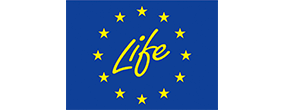Overview
In 2018, the final energy consumption in Norway was 18 Mtoe. The largest consuming sector was industry with 6.3 Mtoe (-10% since 2000). The second largest sector is transport, with a consumption of 4.5 Mtoe in 2018. Energy consumption in transport has increased by 12% since 2000. The fastest growing sector from 2000 to 2018 is the tertiary sector, with a consumption of 3.1 Mtoe in 2018 and an increase of 36%. This is considerably more than in 2000, but the last years the consumption has been constant. The energy consumption in residential sector, was 4.1 Mtoe in 2018, compared to 3.9 Mtoe in 2000.
Figure 1: Final energy consumption by sector (normal climate)
Source: ODYSSEEThe largest improvements in energy efficiency are observed in the service sector, but the last decade, the improvement has declined. The development is influenced by the change in the statistical classification in 2008 and this has a particularly high impact on the service sector. In industry, ODEX shows an annual improvement of 1%. Transport changed very little in the first part of the period, but has improved more the last years, and since 2010 the annual improvement has been 1.3%. Due to lack of data on end-use demand in households, the yearly improvement cannot be measured with the ODEX methodology and therefore some figures are missing below.
Figure 2: Technical Energy Efficiency Index
Source: ODYSSEEThe government’s goal for energy efficiency is defined as an improvement of the energy intensity of 30% from 2015 to 2030. This is about the same as the improvement the last 15 years and the new goal is an improvement compared to the calculated development in energy efficiency in the base line of 25% from 2015 to 2030. The report from the Committee of Energy and the Environment requested the government to appoint a goal of 10 TWh reduced energy consumption in existing buildings compared to the present level. Use of oil for heating as base load in buildings is not allowed after 2020, and the committee wants to evaluate if also the use of oil for peak load and use in district heating shall be included. The purpose of Enova and the Climate and Energy Fund is to contribute to reduced greenhouse gas emissions and strengthened energy security of supply, as well as technology development that also contributes to reduced greenhouse gas emissions in the longer term. The income in the Climate and Energy Fund comes from the return on the deposits in the Fund for climate, renewable energy and energy restructuring, and from the parafiscal charge on the grid tariff (small additional charge on electricity bills).
Table 1: Sample of cross-cutting measures
| Measures | NEEAP measures | Description | Expected savings, impact evaluation | More information available |
|---|---|---|---|---|
| Energy policy (Energimeldingen) | no | White paper on energy policy | Medium | Link |
| Climate and Energy Fund | no | Financial support to measures reducing greenhouse gas emissions and to increased energy efficiency. | High | Link |
Buildings
The most important energy carrier in buildings is electricity; in 2018 80% of the energy consumption in buildings was electricity. The electricity consumption increased from 2000 to 2018 by 14% in the residential sector and by 19% in the tertiary sector. The most fast-growing energy carrier was the district heating. In household, biomass, mainly in the form of fire logs, is still the second largest energy carrier, but it has decreased the last years. Due to lack of data on end-use demand in household, the specific energy for space heating cannot be measured yearly.
Figure 3: Energy mix of households (normal climate)
Source: ODYSSEEFigure 4: Energy consumption per dwelling (normal climate)
Source: ODYSSEEThe energy consumption per employee increased in the first years of the period. The specific use may be influenced by the change in the statistical classification in 2008. The electricity consumption has decreased more than total energy consumption due to an increased use of district heating.
Figure 5: Energy and electricity consumption per m² (normal climate)
Source: ODYSSEEEnova has several programs that support energy efficiency measures in buildings. Efficient use of energy in commercial buildings is supported, for example, by the programs "concept assessment support", "introduction of new technology and buildings", "commercial testing of innovative building technology", "best available technology in existing buildings", "heat plants based on renewable energy" and " comprehensive mapping of buildings ". Enova provides investment support for various types of energy efficiency measures in households such as liquid or air to water heat pumps, bioenergy boilers, accumulator tanks, water-borne heat, solar power, solar panels etc. A planned change in technologies being supported and levels of support is postponed until 1 July 2021 due to market uncertainties. In 2020, use of fossil oil for heating will be prohibited. Through the Enova Subsidy, homeowners can receive support for removing oil burners and oil tanks while switching over to a heating solution based on renewable energy sources.
Table 2: Sample of policies and measures implemented in the building sector
| Measures | Description | Expected savings, impact evaluation | More information available | More information available |
|---|---|---|---|---|
| Investment grants to energy efficiency in existing buildings | Enova support building owners investing in best available technology within energy saving solutions | Link | ||
| Energy measures in households (Enova) | Enova's support programs directed to households is provided for different measures such as: heat pumps, biomass boilers, solar collectors, central heating, production of electricity | Link |
Transport
Cars account for 38% of the sector's consumption and road freight for 31% in 2018. Water and air transport represent 18% and 9%, respectively. The remaining is split among rail (1%), bus (3%) and motorcycles (1%). From 2000 to 2018 the share of road freight transport has increased the most (by 6 points), and the share of water transport has decreased.
Figure 6: Transport energy consumption by mode
Source: ODYSSEEPassenger traffic grew by 29% between 2000 and 2018. The share of both car and rail transport in passenger traffic show a small increase from 2000 to 2018 and the increased share is taken from the bus traffic.
Figure 7: Modal split of inland passenger traffic
Source: ODYSSEEFreight traffic grew by 47% between 2000 and 2018. Freight is dominated by road traffic; it is transported 7 times more on roads than on rail. The share of modes in freight traffic shows a small increase in road traffic and decrease in rail transport (from 12.8% in 2000 to 11.8% in 2018).
Figure 8: Modal split of inland freight traffic
Source: ODYSSEETransport energy consumption has increased considerably due to a high growth in activity since 2000 (1.35 Mtoe from 2000 to 2018). More efficient transportation has made a major contribute to reducing energy consumption (0.5 Mtoe), as well as modal shifts to more efficient transport modes (0.6 Mtoe).
Figure 9: Main drivers of the energy consumption variation in transport
Source: ODYSSEEBattery electric vehicles (BEV) have been introduced faster in Norway than in most other countries. This has been driven by several policies, introduced since 2001, such as the exemption from nonrecurring tax for vehicles, free parking and charging on public parking places, free drive in lanes for public transport and exemption from road toll. Some of these advantages are now reduced. Enova supports both technology and innovation and market development in transport. Investment support is provided for infrastructure for area development of electric vehicle charging infrastructure, hydrogen infrastructure, zero emission vehicles and heavier biogas powered vehicles, such as trucks, excavators, wheel loaders and dumpers, but also electric vans and sea transport electrification.
Table 3: Sample of policies and measures implemented in the transport sector
| Measures | Description | Expected savings, impact evaluation | More information available | More information available |
|---|---|---|---|---|
| Zero Emission Vehicles | Zero emission vehicles have no purchase tax and a very low annual vehicle duty. In addition, other advantages exist, such as free parking, charging and free drive in bus lane. | Medium | Link | |
| Enova's programs for the transport sector | Investment support to energy and climate measures | Medium | Link |
Industry
Final energy consumption of industry decreased significantly, by 10% from 2000 to 2018. Most of the energy is used in energy intensive branches such as production of metals, chemicals, pulp and paper and non-metallic minerals. Around 20% of final energy consumption is used in other manufacturing.
Figure 10: Final energy consumption of industry by branch
Source: ODYSSEEThe unit consumption of pulp and paper shows a major decrease the last years due to close down of a big pulp plant in 2013, following an increase between 2004 and 2011. In 2018, this branch uses less than half of the energy used in 2000, due to several plant close downs in the period.
Figure 11: Unit consumption of energy‐intensive products (toe/t)
Source: ODYSSEESince 2000, activity contributes to increase the industrial energy consumption by 0.78 Mtoe, while structural changes and energy savings contributed to decrease industrial energy consumption, by 1.4 Mtoe and 1.2 Mtoe respectively.
Figure 12: Main drivers of the energy consumption variation in industry
Source: ODYSSEEEnova has a number of programs that support energy-efficient measures in industry, including "Full-scale innovative energy and climate technology", "Energy and climate initiatives in the industry" and "Piloting / demonstration of / full-scale new energy and climate technology". Enova’s technology programmes shall contribute to reducing technological risk and the technology cost of new innovative technology, so that the technology is assisted from the development stage and out into the commercial market.
Table 4: Sample of policies and measures implemented in the industry sector
| Measures | Description | Expected savings, impact evaluation | More information available | More information available |
|---|---|---|---|---|
| Energy and climate initiatives in the industry | Investment support to projects within different thematically areas. | Link | ||
| Full-scale innovative energy and climate technology | Investment support for the realization of innovative projects in energy and climate technology. | Link |





